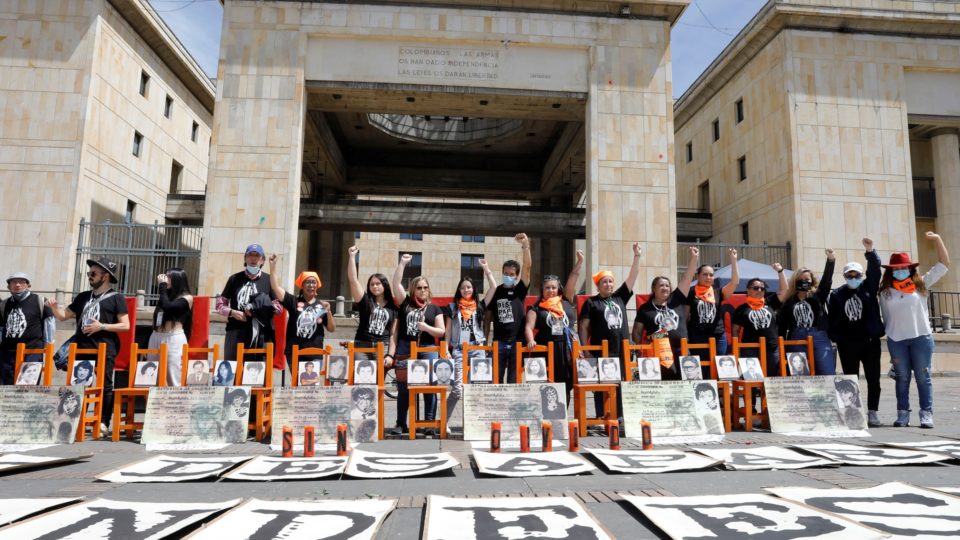The guerrilla M-19 (acronym for Movement 2019 of April) was created in Colombia in 1974; the date of its name refers to the presidential election day of 1974, whose alleged fraud would have been the motivation for the creation of the group.
His name has become more common in the international news in recent months, as the country’s elected president, Gustavo Petro, was part of the guerrilla. The left-wing guerrilla group was active until 1990, and five years earlier it carried out the action for which it is most remembered to this day.
In November 6, 1985, 35 members of M-19 invaded the Palace of Justice, in Bogotá, and took hostages about 300 people, including lawyers, judges and Judiciary officials.
The guerrillas’ action was a response to President Belisario Betancur, for allegedly violating a truce agreed between the Colombian government and M-12 in the previous year. Throughout the siege, which lasted 12 hours and only ended when security forces regained control of the building, the headquarters of the Supreme The Colombian court turned into an inferno of fire, gunfire and explosions.
The most emblematic image of the siege of the Palace of Justice is that of a tank invading the building, which was included in the series “Narcos ”, from Netflix.
The series, which in the first two seasons portrayed the Medellín cartel and its leader, Pablo Escobar, reinforces the thesis that the drug traffickers collaborated with M-19 so that lawsuits against them could be destroyed.
However, among the more than 6 thousand cases destroyed in the fire at the Palace of Justice, there were also records of actions against the military for human rights violations, as journalist Ana Carrigan pointed out in the book “The Palace of Justice: a Colombian tragedy”.
Although the collaboration between the cartel and M-19 was never fully clarified, the Colombian Truth Commission pointed out in its report on the siege, published in 2009, that this partnership took place.
Years after the invasion, Petro denied collaboration with the Medellín cartel. “M-12 has never been linked to drug trafficking. They can accuse us of our responsibility in the Palace of Justice, but anger leads others to slander us”, he claimed.
Petro was in prison when the invasion took place: he was detained by the Colombian Army between October of
, accused of illegal possession of a weapon, and February of 1990.
Although not the exact number of victims is known, as there are still missing persons, the invasion of the Palace of Justice resulted in the death of about one hundred people, 12 of them judges, including the president of the Supreme Court, Alfonso Reyes Echandía.
There is still debate in Colombia about who was most responsible for the massacre. Survivors’ reports point out that, at a certain point in the siege, the guerrillas gathered around 70 hostages who remained in their possession in a palace bathroom. Conflicting versions point to executions carried out by the guerrillas and shootings carried out outside by the military and police.
In an interview with the BBC when the massacre was completed 30 years ago, prosecutor Ángela María Buitrago, who led the investigation into the disappeared, said that many of the weapons and bullets used were removed from the scene. “These are elements that can never be recovered,” she said. Charred bodies were also found at the end of the siege.
No guerrilla was convicted by the courts for the invasion. In 1990, the Superior Court of Bogotá closed the proceedings against members of the M-19, as the guerrillas had accepted a peace agreement and their members were given amnesty. In 2017, the brother of a police officer killed in the episode of 1985 requested the Supreme Court to annul this pardon, but the request was denied.2021
In 2010, reserve colonel Luis Alfonso Plazas Vega was sentenced to 30 years in prison for his alleged role in enforced disappearances during the siege, but in 2015 he was exonerated by the Colombian Supreme Court.
In the same year, the then President of Colombia, Juan Manuel Santos, carried out a measure of reparation determined by the Inter-American Court of Human Rights and asked for forgiveness for the disappearances, deaths and torture during the episode of 1985. Then, in 2019 and 2021, six other soldiers were sentenced to sentences of 30 to 40 years in prison.


